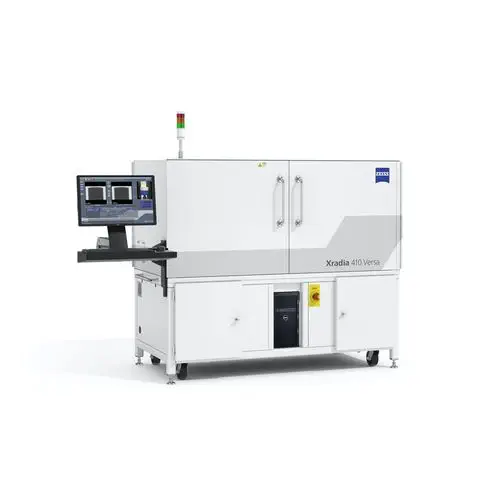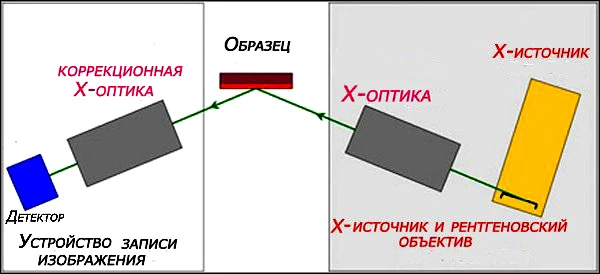

Description
X-ray microscope ZEISS Xradia 410 Versa uses electromagnetic radiation in the X-ray range to obtain magnified images of objects.
Because X-rays penetrate most objects, there is no need to specially prepare them for observations using X-ray microscopy.
Unlike visible light, X-rays are not easily reflected or refracted and are invisible to the human eye. In this way, X-ray microscope exposes film or uses a charge-coupled device detector (CCD) for X-ray detection, passing through the sample. This is a contrast imaging technology, using the difference in the absorption of soft X-rays in the region of the water window by a carbon atom (main element, components of a living cell) and an oxygen atom (water element).
Microfocus X-ray also provides high projection magnification. Microfocus X-ray tube produces X-rays from an extremely small focal spot . Рентгеновские лучи находятся в более традиционном рентгеновском диапазоне и не перефокусируются.
Gap crossing in laboratory nondestructive submicron microscopy
Xradia 410 Versa Bridging the gap between high-performance X-ray microscopes and less powerful CT systems (CT). Providing non-destructive three-dimensional industry-leading resolution visualization, contrast and capabilities in place, Xradia 410 Versa enables revolutionary research across a wide range of sample sizes. Improve your imaging workflows with this powerful, cost-effective solution “workhorse” even in different laboratories.
Basic moments
Best in the Industry 4D and on-site capabilities for flexible sample sizes and types
X-ray microscope Xradia 410 Versa provides cost-effective and flexible three-dimensional visualization, allowing you to work with a wide variety of samples and under a wide variety of research conditions. Non-destructive X-ray imaging preserves and enhances the use of your valuable samples over time. The device achieves true spatial resolution 0,9 µm at the minimum achievable size voxels 100 nm. Improved absorption and phase contrast (for soft or low-load materials) provide greater versatility to overcome the limitations of traditional CT approaches (CT).
Solutions Xradia Versa expand scientific research beyond projection micro- and nano-CT system. There, where traditional tomography is based on single-step geometric magnification, Xradia 410 Versaoffers a unique two-step process, based on synchrotron-calibration optics.
